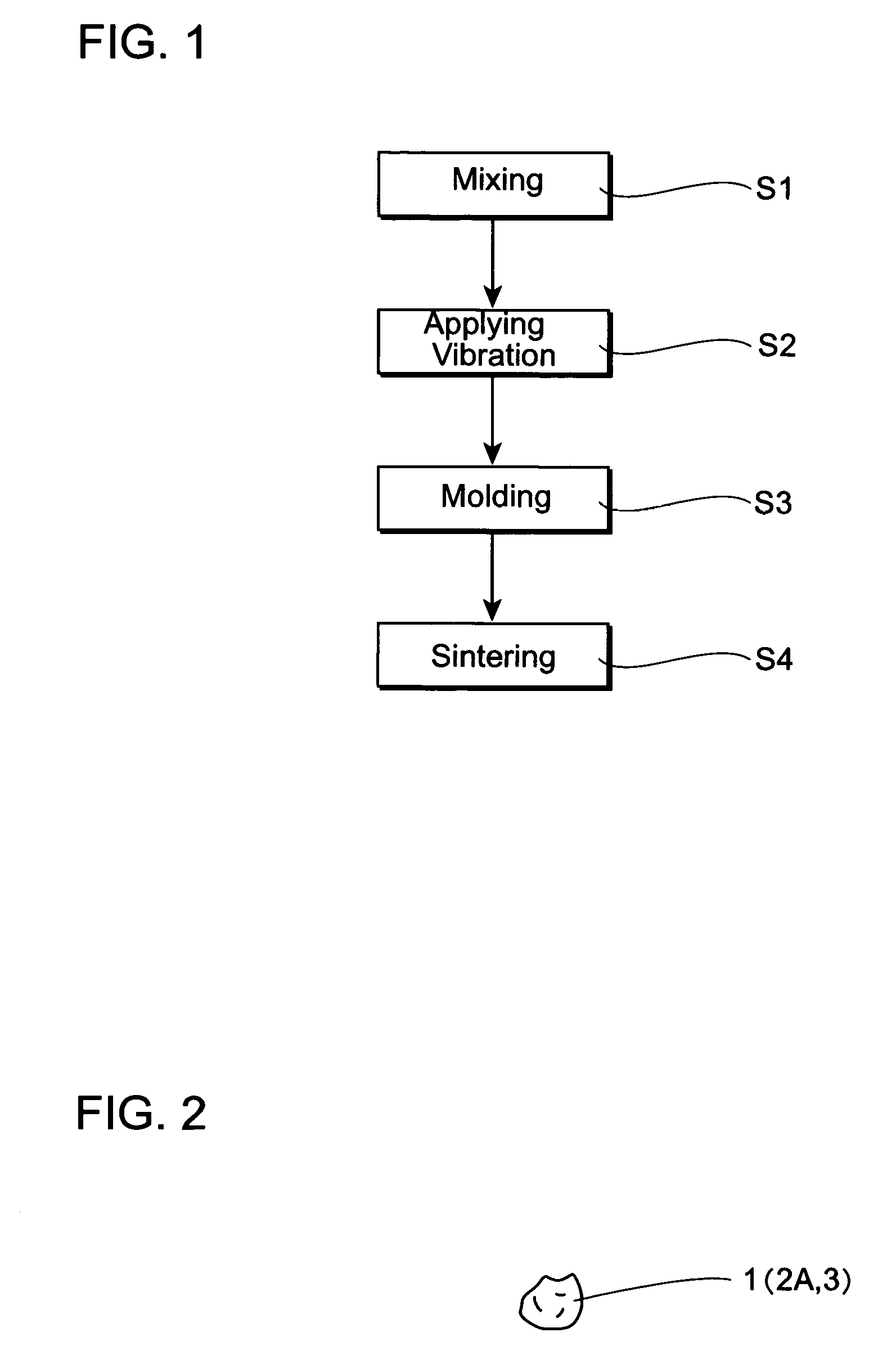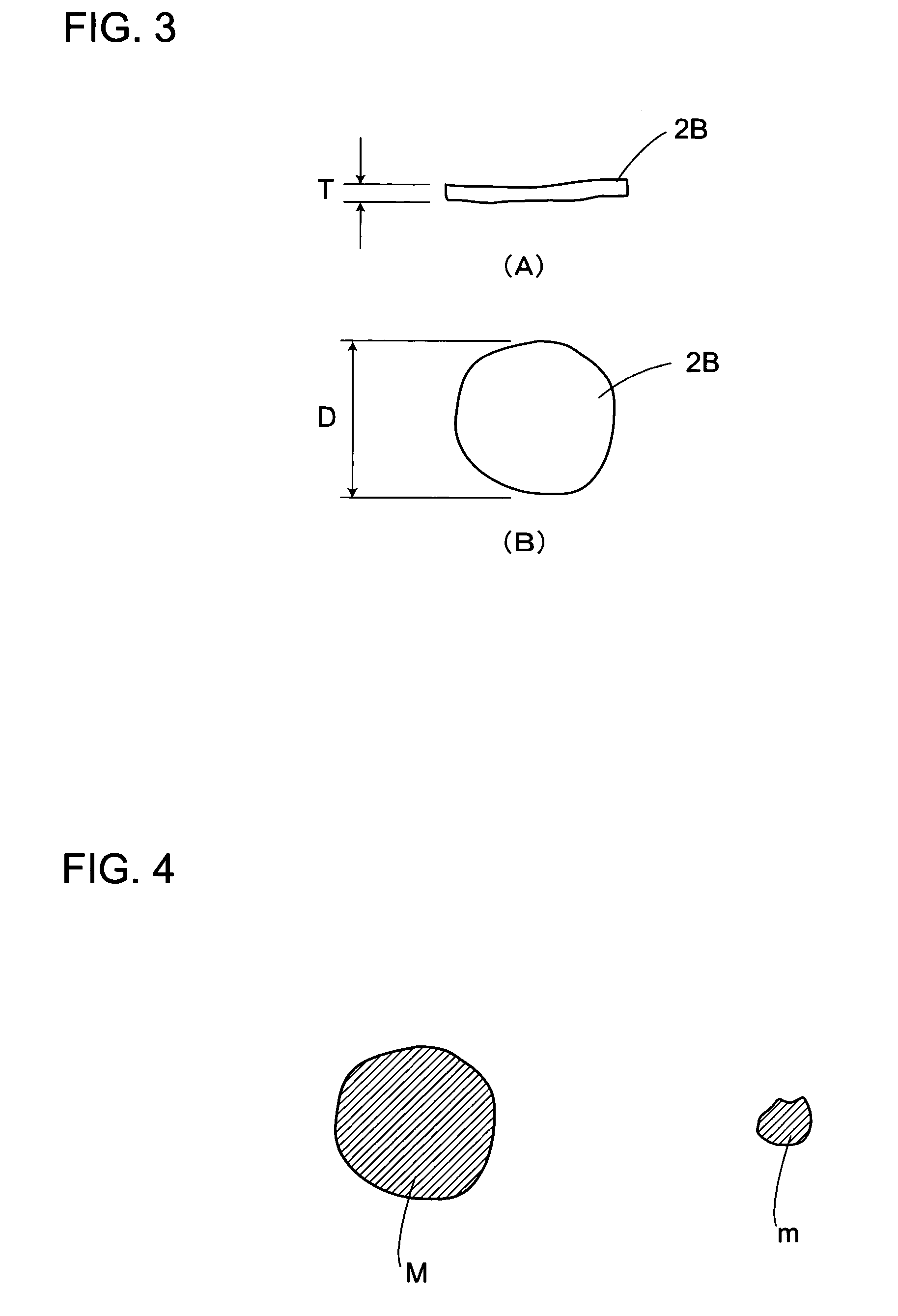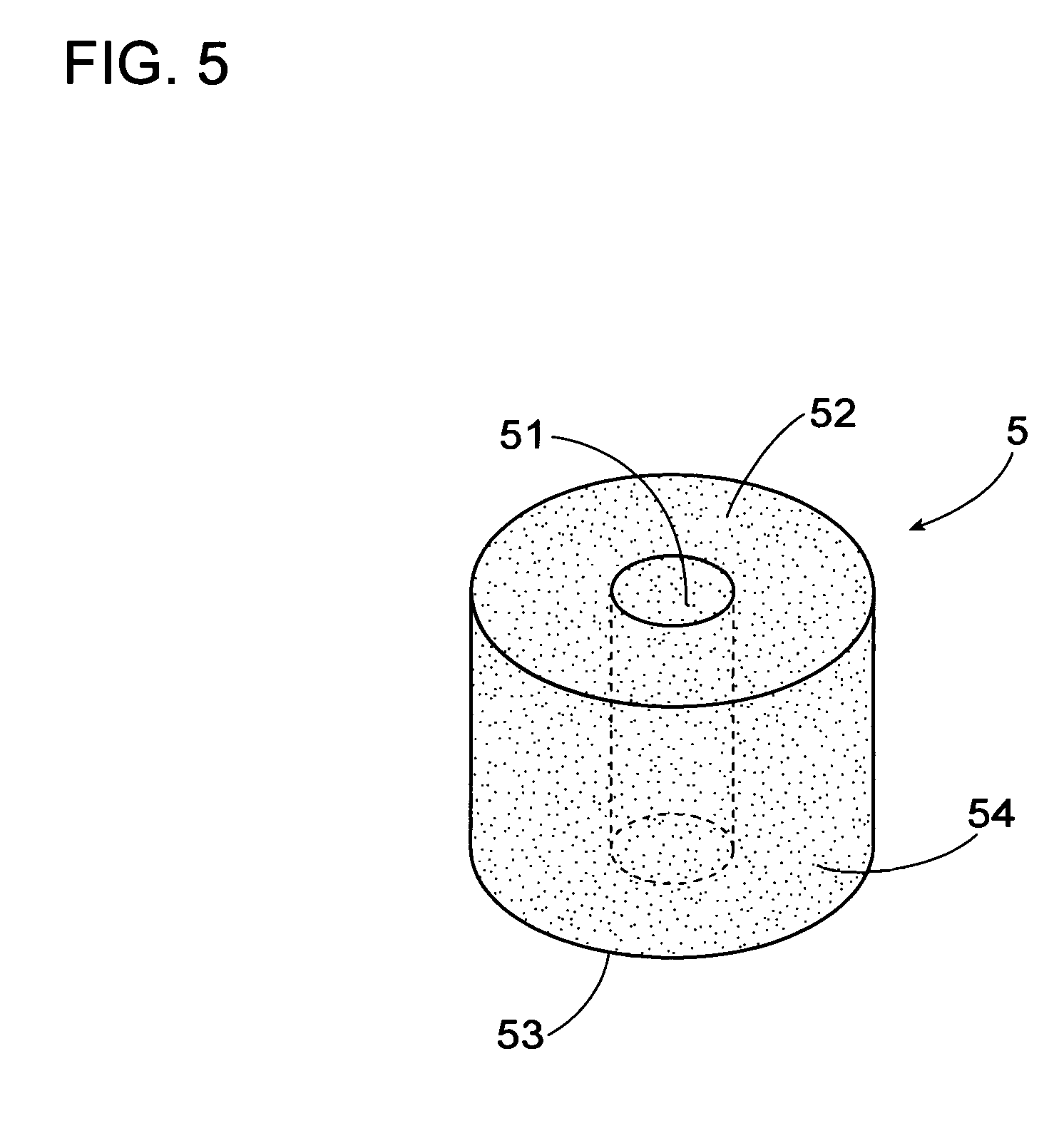Sliding component and method for manufacturing the same
a technology of sliding components and components, applied in metal-working equipment, welding/cutting media/materials, soldering media, etc., can solve the problems of high risk of wear, large wear of bearings, and affecting durability, so as to reduce frictional resistance, reduce wear, and improve durability.
- Summary
- Abstract
- Description
- Claims
- Application Information
AI Technical Summary
Benefits of technology
Problems solved by technology
Method used
Image
Examples
Embodiment Construction
[0030]Preferred embodiments of the present invention will now be explained in detail with reference to accompanying drawings. FIGS. 1 to 8 show an embodiment of the present invention.
[0031]First, a method for manufacturing a sliding component according to an embodiment of the present invention will now be explained. An iron-based material powder 1, a copper-based material powder 2 and a small amount of an other material powder 3 are mixed as materials in a predetermined proportion (Step S1). For the iron-based material powder 1, a powder composed of substantially spherical and irregular particles such as atomized powder is used as shown in FIG. 2. For the copper-based material powder 2, an irregular-particle powder 2A and a flat powder particles 2B are used as shown in FIGS. 2, 3A and 3B.
[0032]An iron or iron alloy powder is used as the iron-based material powder 1, while copper or copper alloy powder is used as the copper-based material powder 2. Tin, carbon, phosphorus or zinc pow...
PUM
| Property | Measurement | Unit |
|---|---|---|
| aspect ratio | aaaaa | aaaaa |
| aspect ratio | aaaaa | aaaaa |
| temperature | aaaaa | aaaaa |
Abstract
Description
Claims
Application Information
 Login to View More
Login to View More - R&D
- Intellectual Property
- Life Sciences
- Materials
- Tech Scout
- Unparalleled Data Quality
- Higher Quality Content
- 60% Fewer Hallucinations
Browse by: Latest US Patents, China's latest patents, Technical Efficacy Thesaurus, Application Domain, Technology Topic, Popular Technical Reports.
© 2025 PatSnap. All rights reserved.Legal|Privacy policy|Modern Slavery Act Transparency Statement|Sitemap|About US| Contact US: help@patsnap.com



